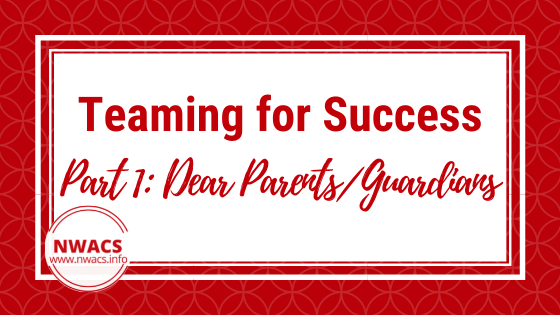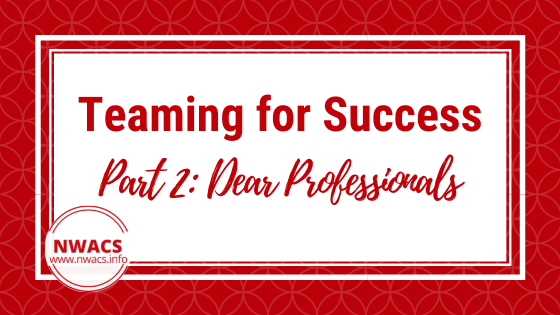by Cassandra Stafford, MS, CCC-SLP/L, ATP (Speech-Language Pathologist and Assistive Technology Professional), NWACS Board Member
reading time: 2 minutes
The views expressed in this post are that of the author and do not necessarily reflect the views and policies of NWACS. No endorsement by NWACS is implied regarding any device, manufacturer, resource, or strategy mentioned.
Life is full of transitions. We start encountering transitions early in life. And they keep coming. Some transitions involve more planning and more people than others. Transition planning is particularly important for children with complex communication and learning needs.
These transitions include:
Transitioning from early intervention to early childhood special education (preschool).
Transitioning from preschool to elementary school.
Transitioning from elementary school to middle school.
Transitioning from middle school to high school.
Transitioning from high school to a post-secondary setting.
Transitioning from job to job. Or program to program.
Transitioning to a new living situation.
Other transitions may include:
Transitioning from classroom to classroom within the same school.
Transitioning from grade to grade within the same school.
Transitioning from familiar staff/teachers to unfamiliar ones.
Transitioning from one school to another because of a team (or family) decision.
Transitioning from one school district to another when moving.
Transitioning from previous support professionals to new support professionals.
Transitions that happen because of staffing changes.
Transitions that happen because of family changes.
Every transition involves planning, preparation, and information to transfer. Strong transition plans at each step along the way help set up your child for the life they want when they grow up. This pre-planning and preparation helps prevent teams from starting over at each transition. It helps your child keep a consistent system of communication. It helps support forward momentum and progress with communication skills. Your input is key to developing transition plans for your child. Including your child in this process, as much as they are able, builds self-advocacy and self-determination skills.
Your child’s success in life will be strengthened by:
strong self-advocacy skills,
strong self-determination skills, and
the ability to skillfully use AAC/AT.
That means having a strong and consistent plan from the start. A clear plan that gets communicated to your child’s team EVERY time there is a change in the team. A plan that guides the team. A plan that supports your child’s development. A plan that helps keep things moving smoothly forward, even when there are changes to the team.
Read more about transition planning by visiting the NWACS AAC & Transition Planning resource page.
What tips do you have to help with transition planning?
Related posts:






